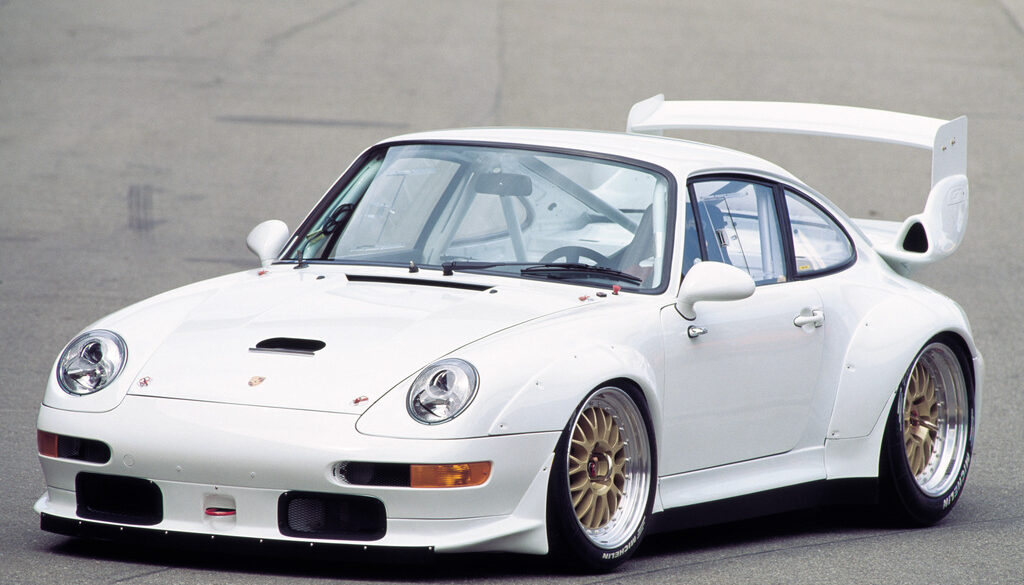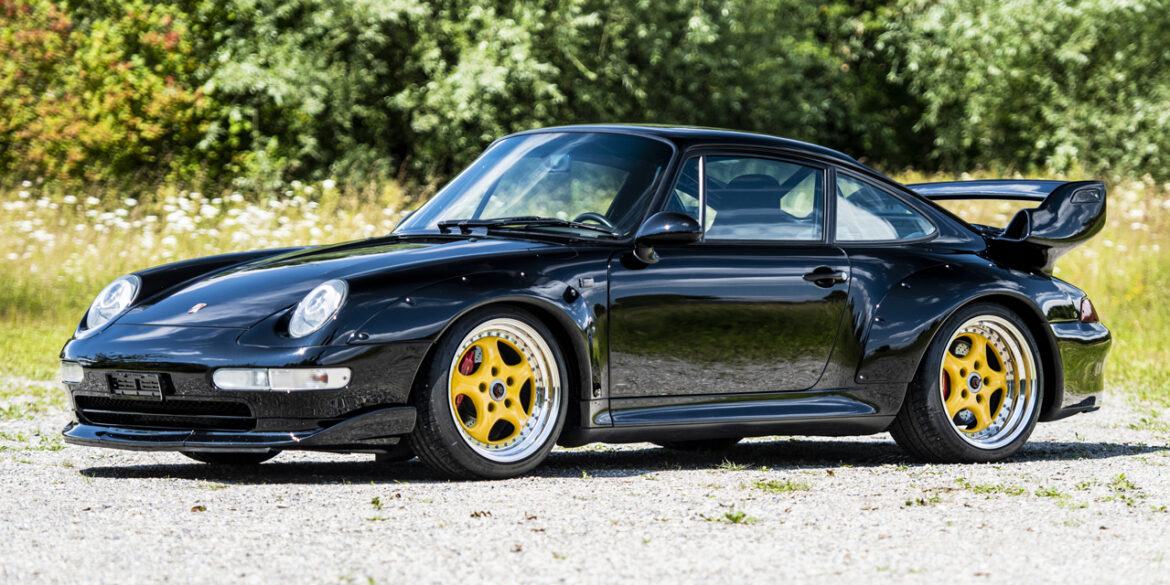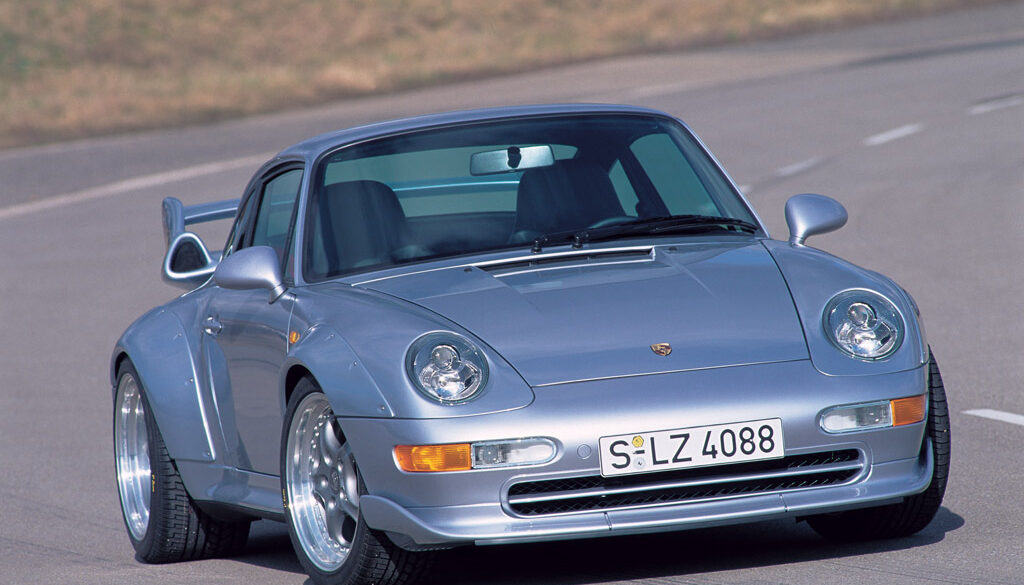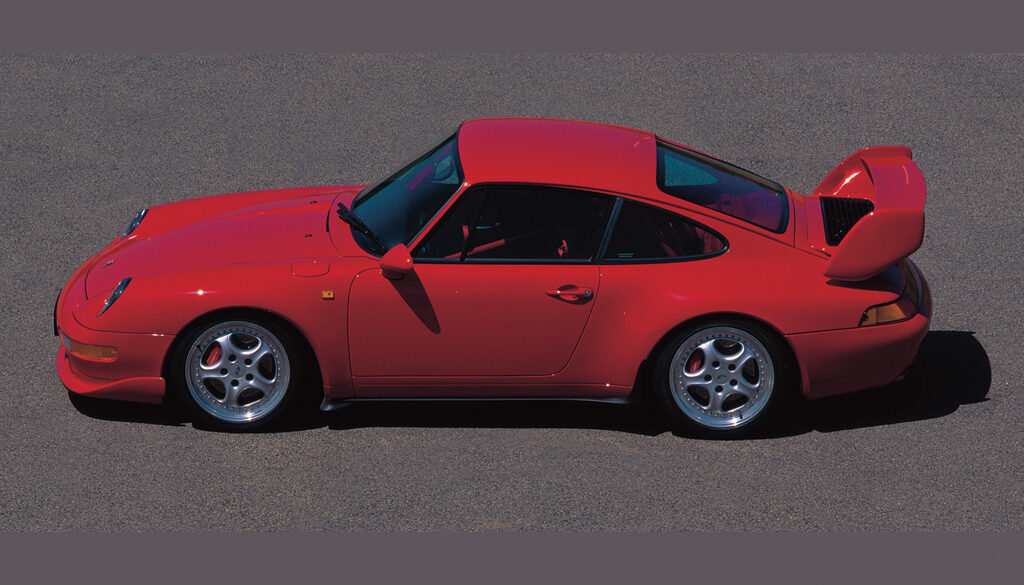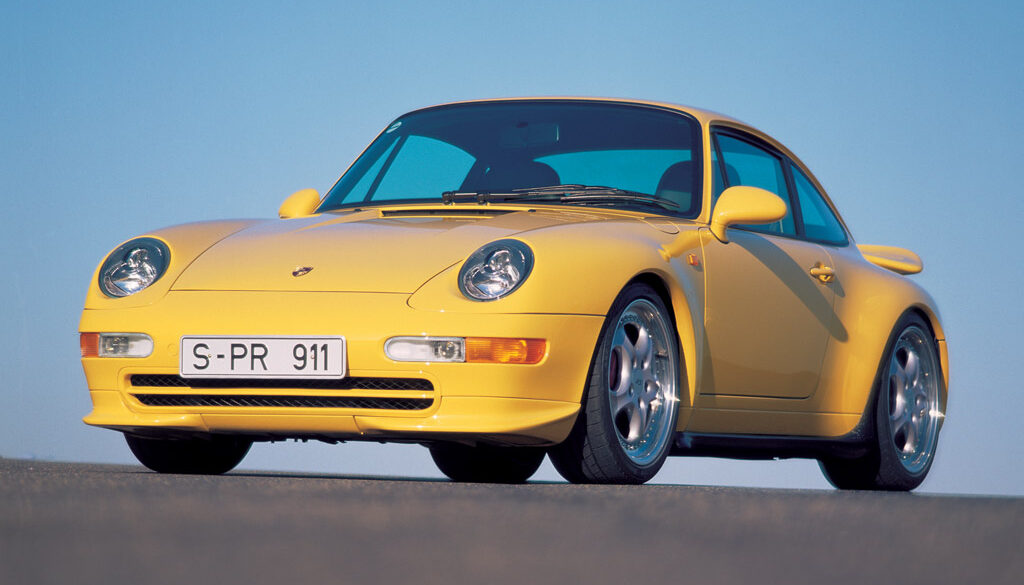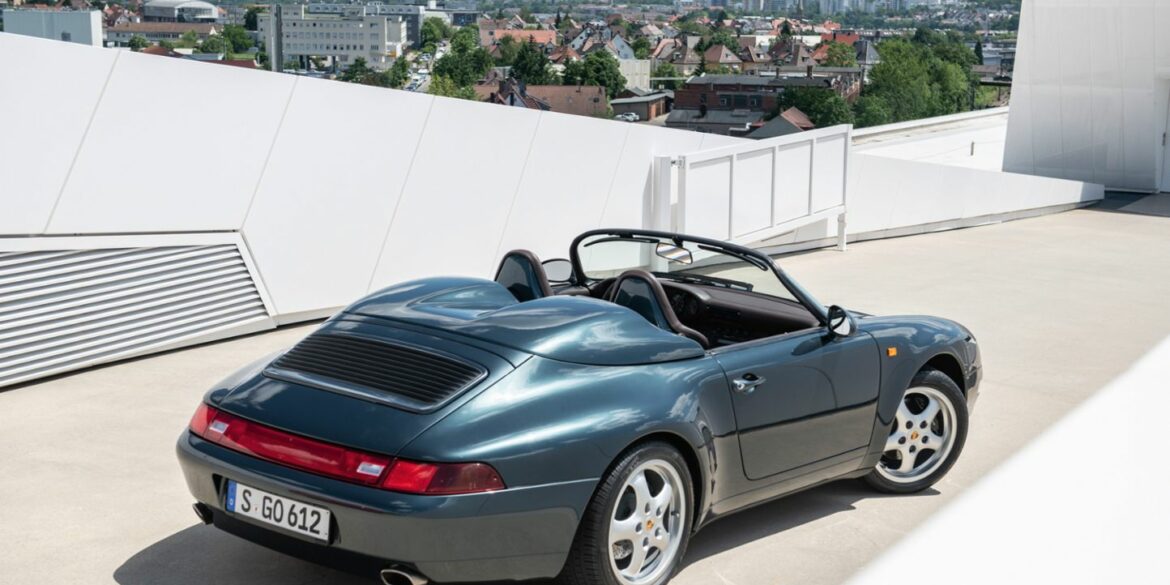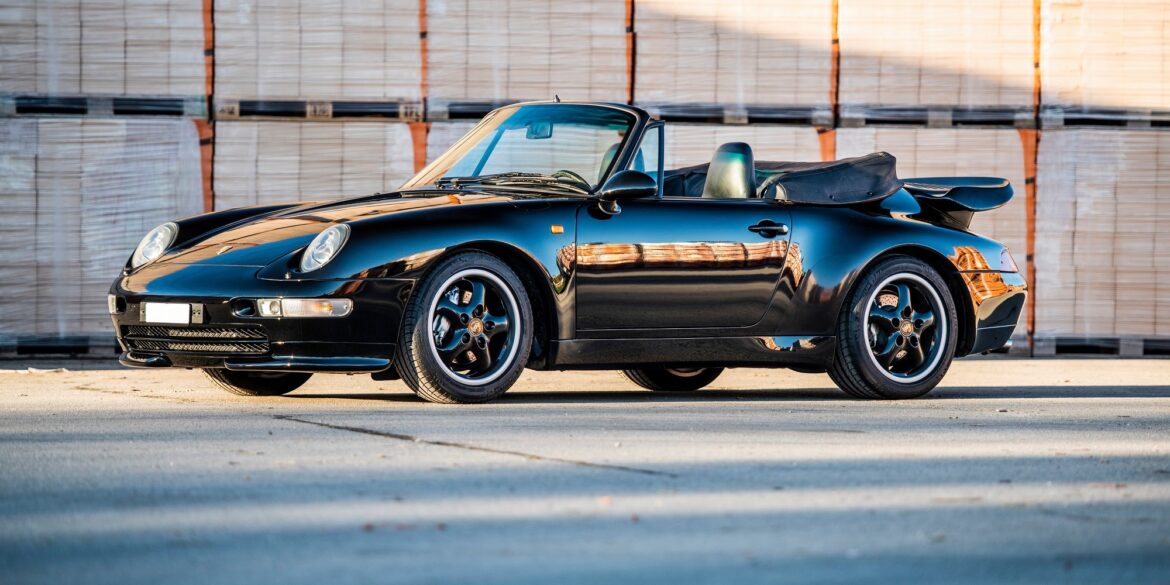The Porsche 911 GT2 Evo represented the top specification ever produced for any air-cooled Porsche. Designed to compete in FIA GT1, it incorporated a twin turbocharged 3.6L flat-6 engine rated at a full 600 HP and 491 lb-ft of torque. As compared to the standard 993 GT2, Porsche widened the rear fender extensions to cover wider modular wheels and added a new front spoiler with inlets for oil and brake cooling. A second deck appeared on the already outlandish rear spoiler, which could be mounted higher in the air stream for added downforce. Approximately 11 samples were produced.
The GT2 was the hardcore, race-focused version of the 993 Turbo, using essentially the same 3.6 L twin-turbocharged engine, but slightly modified with increased power output. The car was made to compete in the FIA GT2 racing class. Among this already very exclusive circle of 57 cars there is an even more rare community. 20 of the 57 road-legal cars were produced in a second – and last – badge with upgraded engine power (450 PS) called GT2 “Clubsport” which make them the last Porsche models with air-cooled engines.
The Porsche 911 GT2 (or GT as it was initially called) from the 993 Porsche series was built in order to meet homologation requirements for the GT2 class racing which had banned all-wheel-drive vehicles by the mid 1990's. As a two-wheel drive vehicle, the GT2 had significant weight savings as compared to the standard 993 Turbo from Porsche, making it instantly competitive in racing. The 993 GT2's original 3.6 L (220 cu in) engine generated a maximum power output of 316 kW (430 PS; 424 hp). There was an update in 1998 that upped power to 450 bhp.
The 993 Carrera RS Clubsport, 213 of which were built to meet the FIA GT2 homologation requirements, is a race-ready, although street legal variant of the 993 Carrera RS, not to be confused with the track only 993 Carrera Cup RSR. Emphasizing its competition credentials, the 993 Carrera RS Clubsport came with a welded-in roll cage as standard, considerably increasing its rigidity, racing bucket seats, six-point safety harnesses, battery isolator switch, fire extinguisher, and a huge fixed rear wing, the latter also available on the 'base model' Carrera RS.
The 993 Carrera RS is a lightweight, stiffer version of the naturally-aspirated 993 Carrera meant for ultimate street performance. At its heart was the 3.8-liter normally aspirated Type M64/20 engine producing 300 bhp at 6,500 rpm along with 262 foot-pounds of torque at 5,400 rpm. Looking to save as much weight as possible, every non-essential item from the car was removed. The Carrera RS tipped the scales at a 1,280 kg. About 1,000 Carrera RS were built, making it one of the rarest and most collectable 993-generation 911's produced. In addition to the Base Trim it was also available as the race-ready, street legal, RS Clubsport (option M003).
Porsche faithful are probably shaking their heads right about now. Porsche never officially made a production 993 Speedster. Notice we said “production.” In 1995, the company created a dark green 993 Speedster for Ferdinand “Butzi” Porsche 60th birthday. Jerry Seinfeld apparently felt left out; he commissioned a silver 993 Speedster in 1998, though it seemed to have begun life as either a Targa or Cabriolet before being sent to Porsche Exclusive. Only two 993 Speedsters were ever made; if you see one that’s not silver or dark green, chances are it’s a phony. The rarest among these models is the 911 Speedster.
The Porsche 911 Turbo Cabriolet (993 generation) is an incredibly rare car – only 14 were built in 1995, in the early days of 993 production. Rather than the contemporary twin-turbo powerplant in the 993 Turbo Coupe, the 993 Turbo Cab was fitted with the single turbo of the 964 Turbo 3.6. Although the Turbo Coupé was introduced earlier, the actual production started after the Turbo Cabriolets were sold. Turbo Cabriolets were 1995 models by VIN and Turbo Coupés were immediately produced as 1996 models although the 1996 model year had not yet started.


